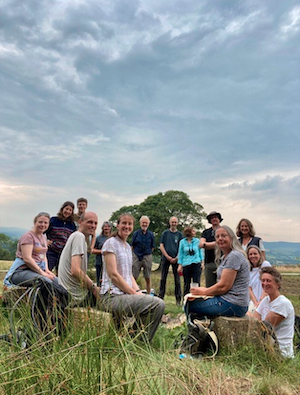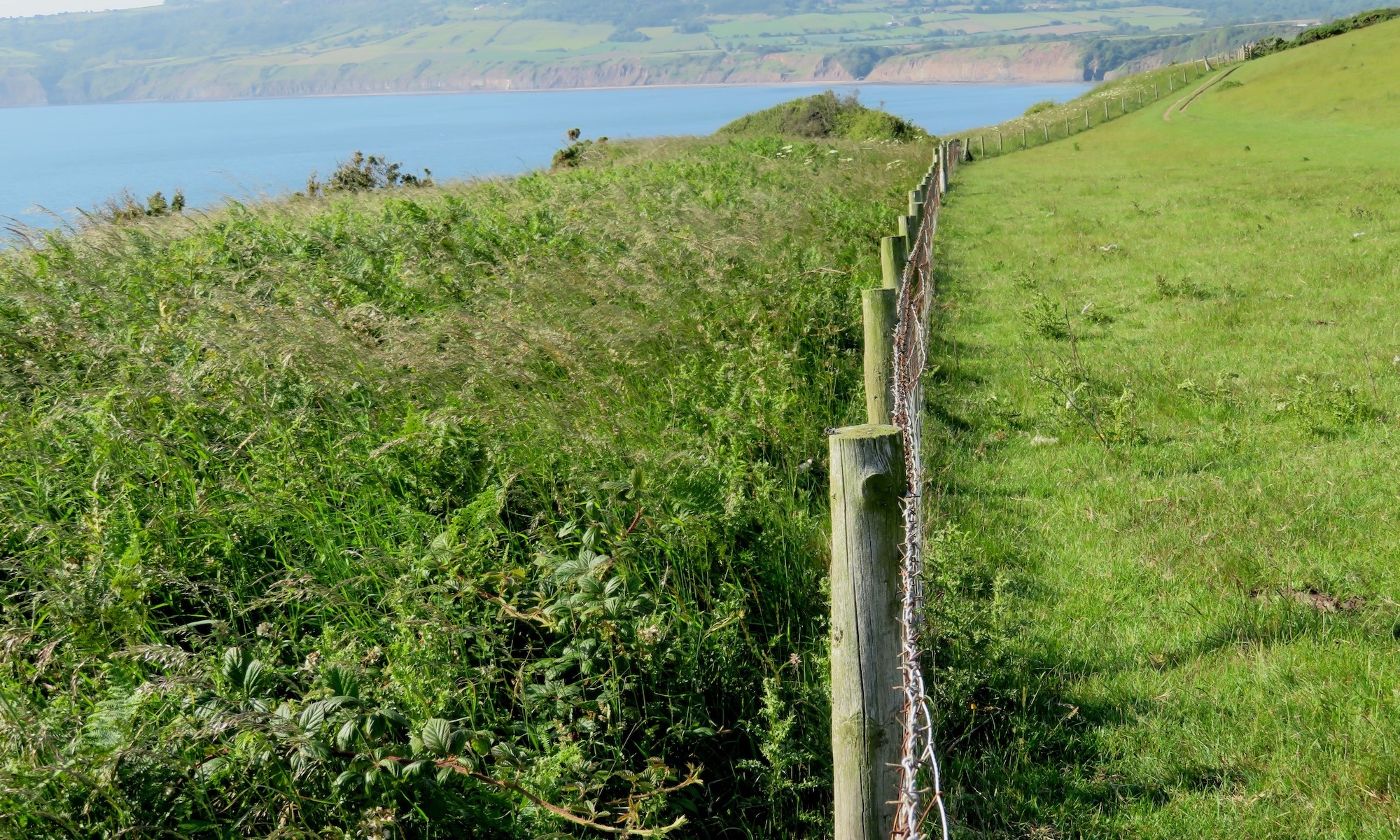by Kate Graham
28th September, 2022
“let your feet feel the ground, imagine thousands of tiny rootlets coming down out of your feet, into the ground, imagine them stretching down… what will they meet?”
I visualise tiny tendrils reaching down into the soil, stretching down as they meet worms, beetles, larvae, little bugs, ants, pebbles, fungi. I feel grounded, connected, almost stuck to the ground in my connection. And then I imagine the great fungal networks that I have read about, stretching deep beneath us, unseen, unknown, with a sense of mystery and awe almost as great as that I feel when I look out over the landscape all around us.
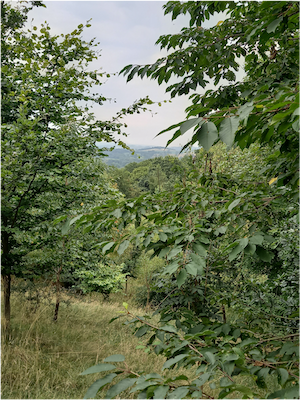
I’m at Broughton Sanctuary, a 3,000 acre estate close to Skipton, owned and curated by the Tempest family for over 1000 years. Two years ago they commenced an ambitious programme of rewilding or nature recovery in 1000 acres of the estate. I’m here as part of a group visit organised by the Yorkshire Rewilding Network, hosted by Liz and Liam, whose enthusiasm spills over as Liam describes what is going on around us, what we can see, and Liz takes us on an inner journey, our inner rewilding to connect our senses and ourselves more deeply.
This inner journey, the rewilding of our self and our soul, of reconnecting to nature within us and without us is central to the Broughton ethos. The practice could be described as “mindfulness in nature” but to do so would be to miss the most important aspect of it all. We have allowed a fundamental disconnect, a duality, to develop over the centuries, in which we see nature as the “other”; a resource to be used, controlled, managed, a tool for healing, something to feared and eradicated, a something utterly separate from us, that is there for us to dispose of as we wish.
This separateness underpins much of western culture and what we see as “civilisation” and is deeply embedded in our societal psyche, and to varying degrees at an individual level. But the reality, as any scientist will tell you, is that we are part of nature just as nature is part of us. This is easy to write and to agree with when we read it in the RSPB magazine, or a rewilding website. Actually feeling that sense of truly being part of nature, no longer separated, is both awesome and terrifying. Awesome because it releases such wonder and possibility, wisdom and infiniteness of experience. Terrifying because in slipping out of our privileged position as “mankind” we become small, vulnerable, unable to control our surroundings. We become open to fear, and we become open to joy, wonderment, peace and calmness.
How does this tie into Rewilding and Nature Recovery (as It is termed at Broughton)? Liam asks us to look at the rewilding field in which we are standing, and compare it to the one on the other side of the wall, a smooth green sward a classic Yorkshire scene, with sheep grazing peacefully.
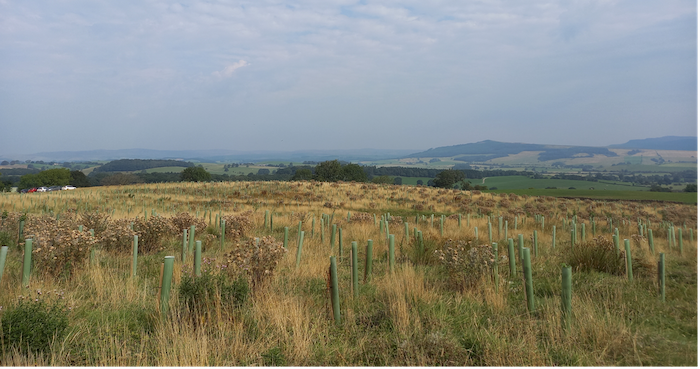
“without wishing to be patronising, what differences do you see?”
“Weeds!” comes back the instant answer.
It’s true. We are standing in long grass, dotted around with plastic tubes protecting tiny saplings. In amongst all this are flourishing stands of docks, their seed heads a vibrant rust brown, and huge thistles, each one garlanded in white down, ready to set sail in the wind to seed further pastures. The field is a mosaic of rich yellows and browns in contrast to the green: earlier in the year they were a mass of reds, blues and yellows as wildflowers flourished.
A friend of mine who has planted a wood a few miles further up the valley has spent a lot of effort pulling up innumerable thistles, and spraying in the early years to keep all these “weeds” at bay. Her trees are growing well, and have survived drought, high winds and torrential rainfall. But she wouldn’t call it rewilding or nature recovery: she is growing trees.
This process is different. It is about some initial interventions, such as planting over 200,000 trees, creating wetlands, taking off the sheep, and slowing water flows, by “daylighting “ culverts (blocking culverts so the water has to find slower drainage routes on the surface) and leaky dams in moorside gullies. But having done that, the next task is to wait and see what happens. They hope that as the trees grow, the increasing canopy will discourage the more invasive plants. At some point they will allow some grazing (short- or long-horned cattle to mimic bison or buffalo) to churn up the soil, crash through the undergrowth, let light into the emerging woodland, and create diverse micro environments.
It’s a process of stepping back and trusting nature to take its course. It goes against the grain. “Isn’t it a lot of work managing it all?” a practical question from one person in the group.
But what would the work be? That’s the weird thing: we are being asked to let go, not to be important, not to be in control, to stand back and be patient. It means letting it be messy, unkempt, overrun by “weeds”. In some areas nature needs little help to recover, but here in Broughton, intervention has been needed, as the land was so depleted that it would take many decades to recover naturally. They are trying this though, in a field downwind of a small wood planted some 20 years ago by a partner contractor, to see what nature can do on its own.
When they started biodiversity surveys showed there was very little to count. Already, 18 months in, a recent survey identified 460 different species of plants, shrubs, insects, birds and animals.
On our walk we could see how the long grass is providing a home for a range of moths, grasshoppers, baby frogs, insects and small mammals. These in turn have attracted the buzzards circling above, increasing numbers of kestrels, their first merlin, and red kites from further east. It’s exciting, it feels like an almost immediate impact. Something is working!
“We aren’t going to be like Knepp (the estate in Suffolk described by Isabella Tree and which now hosts eco tourism and ‘Serengeti‘ like safaris)” explains Liam. This part of Yorkshire has only 6% tree cover, compared to the UK average of 11% and the EU average of 39%. There is a lot of catching up to do. The temptation is to help it as much as possible, to take back control, and whilst there is further planting that can be done and some more wetland creation, it is now much more a case of standing back and seeing what happens.
The key role now is observing, counting, measuring, noticing what is going on. Noticing the differences in soil quality, in biodiversity, in animal behaviour, in run-off speeds, and for this estate in particular, noticing the human healing, increasing connection, groundedness and happiness.
